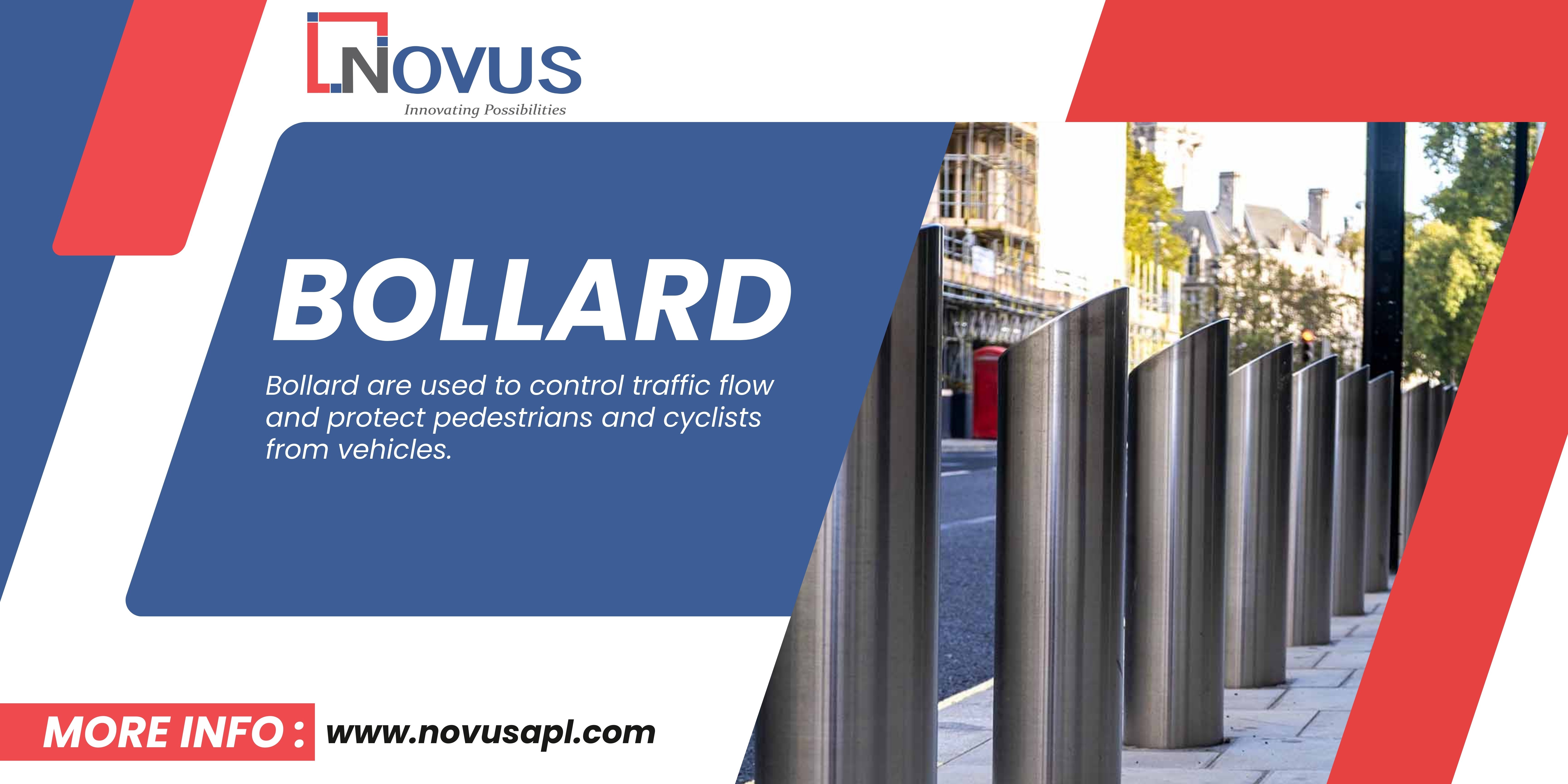- sales@novusapl.com
- +91-7290044421

2) What are Anti-Terrorism Bollards?
3) Types of Anti-Terrorism Bollards
4) What are Electro-Hydraulic Bollards?
Anti-terrorism bollards have emerged as a crucial element in safeguarding public spaces. These robust barriers are designed to prevent vehicles from being used as weapons, thereby mitigating the threat of vehicular terrorism. The significance of anti-terrorism bollards in enhancing urban security, their design and functionality, and the broader impact they have on public safety.
Anti-terrorism bollards are robust, fixed or retractable posts that are strategically placed to prevent vehicles from entering restricted areas. They are engineered to withstand high impacts, making them an essential component of perimeter security for sensitive sites such as government buildings, pedestrian zones, sports arenas, and other high-traffic areas.
Discuss the main features such as retractability, operation modes (manual and remote-controlled), and speed of deployment. Enhanced security and deterrence against vehicle-borne threats. Flexibility in access control without sacrificing pedestrian or emergency vehicle access. Cost-effectiveness compared to fully automatic systems.
Auto pneumatic bollards significantly enhance public safety in urban environments by providing a flexible and responsive security solution. Here are some of the key benefits.
Auto pneumatic bollards are a vital component of modern urban security strategies. Their ability to provide dynamic and automated control of vehicle access makes them an ideal solution for protecting public spaces from vehicular threats. By incorporating these advanced security measures, investing in auto pneumatic bollards is not only about preventing attacks but also about building resilient urban spaces that can adapt to evolving security challenges. As technology continues to advance, the effectiveness and integration of these bollards will only improve, further enhancing urban security in the face of new and emerging threats.
Hydraulic bollards are security barriers that can be raised or lowered to control vehicle access to restricted areas.
Hydraulic bollards use a hydraulic mechanism to move the bollard up and down. This system typically includes a hydraulic pump and fluid, which exert pressure to raise the bollard.
Hydraulic bollards are usually made from high-strength materials such as steel or stainless steel. These materials ensure the bollards are durable and capable of withstanding significant impact from vehicles.
Manual control: Using a key or button located near the bollard. Remote control: Operated via remote control systems. Automated systems: Integrated with access control systems, sensors, or timers for automatic operation.
Hydraulic bollards are generally embedded deeply into the ground, typically around 1 to 1.5 meters (3 to 5 feet) depending on the specific design and security requirements. This deep embedding provides the stability needed to withstand high-impact collisions.
Accelerate Your Business with Novus Automation
Become a Partner